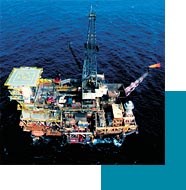Business and industry in Norway - The growth of industrial activity in Norway
Guidelines/brochures | Date: 26/06/2001 | Ministry of Trade, Industry and Fisheries
Originally published by: Ministry of Trade and Industry
Raw materials, such as fish, wood and iron ore, have been utilised in Norway for several centuries. In the early 20th century, hydropower was an important basis for starting Norway’s extensive, energy-intensive manufacturing industry. Foreign capital was crucial to the development of a lot of the capital-intensive heavy industry in Norway. More recently, the oil and gas industry has played a key role in the Norwegian economy.
Over the past few decades, service companies have become increasingly important to both employment and overall value creation in Norway. This trend is to be found in all developed economies and is related to the fact that higher income levels in society lead to an increased demand for services. This trend is also exacerbated by the fact that there is a growing tendency for companies to outsource services that previously formed an integral part of their operations.
From 1850 until the turn of the century, Norway experienced a period of considerable economic growth. The strong expansion of the British economy laid the foundation for both a burgeoning shipping industry in Norway and Norwegian exports of fish and wood. In return, Norway imported finished goods and grain.
Around the turn of the century, the Norwegian pulp and paper industry gained a strong international market position and was, until 1950, Norway’s largest export-oriented industrial sector. Many new companies arose in the textile and clothing industry, iron-foundry, brick and brewery industries. These companies were mainly located around the Oslo fjord and manufactured goods aimed at the Norwegian market.
In 1905, Norsk Hydro started to manufacture nitrogen fertiliser using hydropower-based energy. The metals and chemicals industries gradually developed into the largest export sectors next to the pulp and paper industry. The fact that they had to be located near to a waterfall meant that these industries were typical regional industries, of great significance to their local communities. The need to manufacture equipment for the power stations gave rise to the development of a new mechanical engineering industry.
Although the depression in the 1930s also affected Norway, the Norwegian economy started to expand again after a few years in spite of the international economic slump. The energy-ntensive export industries and shipping did well in the years leading up to the Second World War, but most of the expansion came in the manufacture of finished goods for the Norwegian market.
Naturally, the war years led to a slump for the export industries, but roads, railways, power stations and industrial facilities were built and formed the basis for later expansion.
From 1950 until 1970, Norway had a high rate of productivity growth and low unemployment and inflation rates. The industrial expansion meant that many people abandoned farming as a way of life and moved away from rural areas.
From the mid-1970s onwards, the growth in the petroleum sector meant that Norway continued to be a significant producer of raw materials and energy. However, the exceptionally high wage increases in Norway in the 1970s and 1980s, together with the strong krone, were detrimental to Norway’s competitive ability. The traditional export companies and shipyards experienced a sharp decline in their order intakes, but the petroleum industry laid the foundation for new export industries. During the second half of the 1970s, this growth grounded to a halt in most of Norway’s industry, with the exception of the basic chemicals industry, whilst the business-services industry expanded. Services that had previously been produced internally in the company – such as auditing, technical services and property management – were gradually taken over by companies specialising in these.
In the 1990s, Norway experienced its strongest economic upswing since the early 1970s. The services sector is still expanding, both as regards employees and value creation. The private-services and business-services sectors in particular seem to have a considerable potential for increased value creation and employment. The growth of the fish-farming and fish-processing industries has provided Norway with a strong fisheries industry that exports 90 per cent of its output.
|
|
|
| |||
The growth of industrial
| ||||


